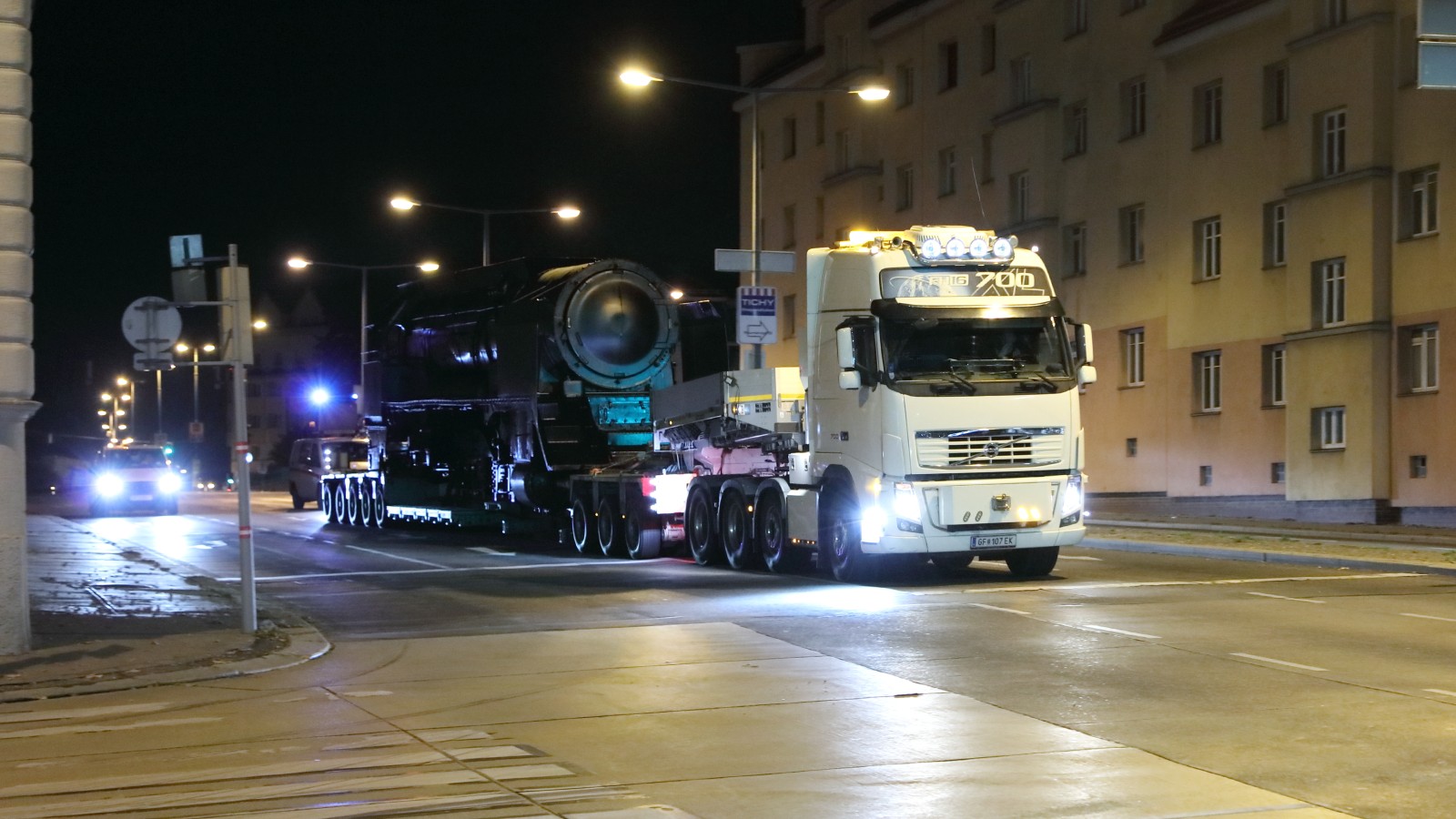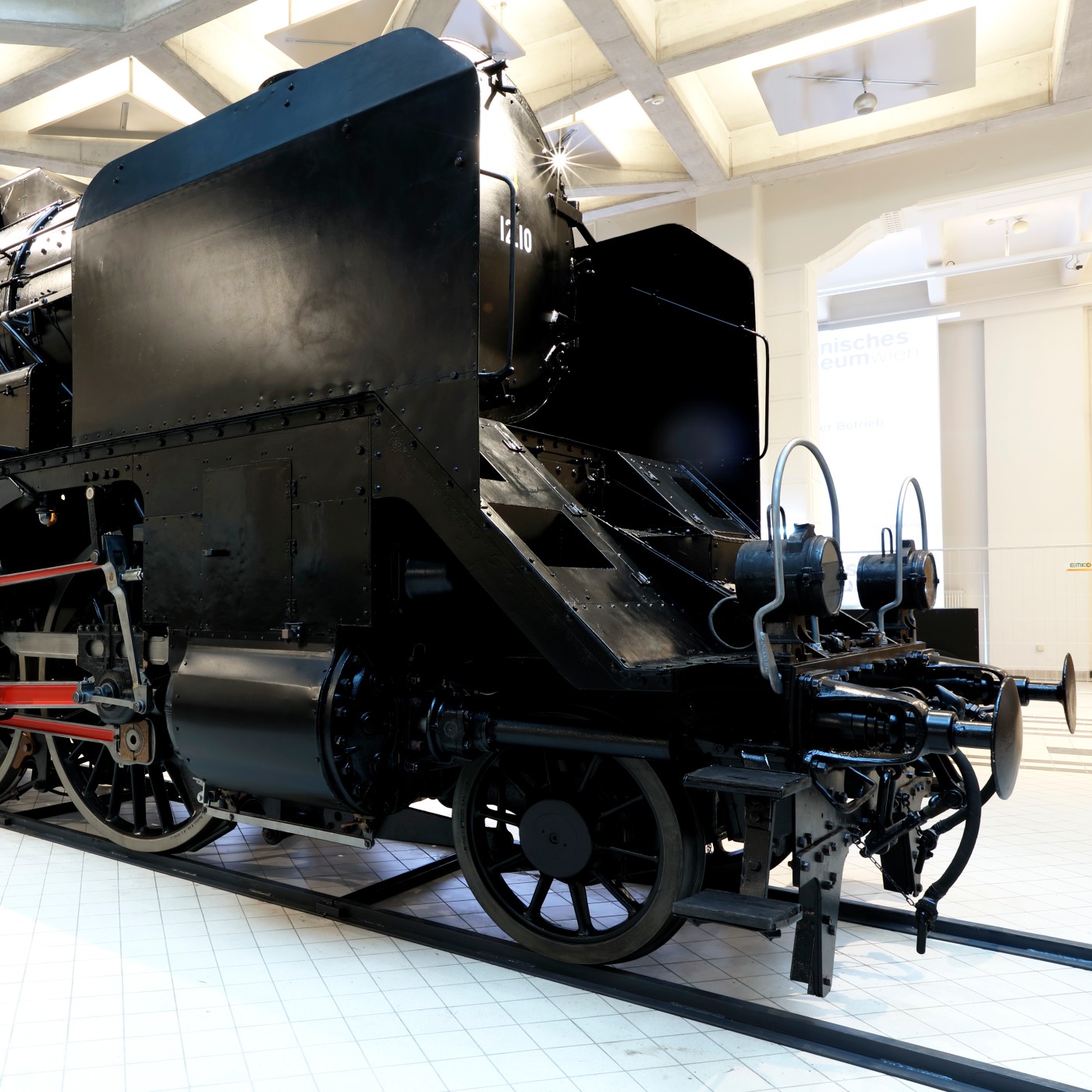After the locomotive had been brought into the Technisches Museum Wien (Vienna Museum of Science and Technology) in a spectacular move, the wedding ceremony took place – which is how the re-joining of the locomotive and the axles is fondly referred to.
After the locomotive had been brought into the Technisches Museum Wien in a spectacular move (link to https://www.technischesmuseum.at/die-lokomotive-kehrt-zurueck), the wedding ceremony finally took place in November 2019 – which is how the re-joining of the locomotive and the axles is fondly referred to.
For this milestone in the assembly of the 12.10, the locomotive had to be lifted by two metres. Several forklift trucks were needed to roll the axles underneath the suspended giant. The 80-tonne locomotive was then lowered millimetre by millimetre. The axle bearings and the pivot pins had to be precisely aligned to glide into the corresponding recesses. As each axle weighs at least five tonnes, the museum’s staff not only needed a lot of muscle power, but also had to take great care, because adjusting the position required the utmost precision.
After more than eight hours of work, the locomotive finally stood on its own wheels again. The next step was to assemble the bogie with the two rear axles. Before assembling the bogie, however, another heavy component part, the brakes, had to be refitted.
The locomotive was then moved to its final position along with the tender, the supply vehicle carrying water and coal. In the following months, there was still a lot of detail work to do, because many individual components had to be restored and mounted before the freshly restored locomotive was presented to the public in September 2020. The giant is now on display in the west hall of the Technisches Museum Wien and is additionally brought to life with a spectacular video installation.
For this milestone in the assembly of the 12.10, the locomotive had to be lifted by two metres. Several forklift trucks were needed to roll the axles underneath the suspended giant. The 80-tonne locomotive was then lowered millimetre by millimetre. The axle bearings and the pivot pins had to be precisely aligned to glide into the corresponding recesses. As each axle weighs at least five tonnes, the museum’s staff not only needed a lot of muscle power, but also had to take great care, because adjusting the position required the utmost precision.
After more than eight hours of work, the locomotive finally stood on its own wheels again. The next step was to assemble the bogie with the two rear axles. Before assembling the bogie, however, another heavy component part, the brakes, had to be refitted.
The locomotive was then moved to its final position along with the tender, the supply vehicle carrying water and coal. In the following months, there was still a lot of detail work to do, because many individual components had to be restored and mounted before the freshly restored locomotive was presented to the public in September 2020. The giant is now on display in the west hall of the Technisches Museum Wien and is additionally brought to life with a spectacular video installation.




